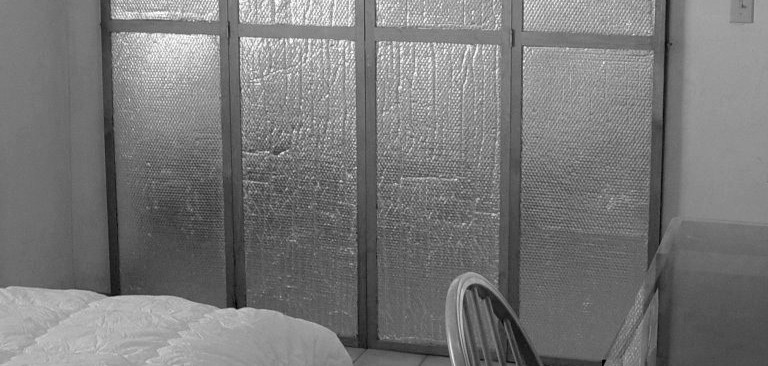In Montreal, the sound of ripping plastic is the first sign of spring, as the city tears off window coverings to let in the first warm breezes. Unfortunately, spring is a distant prospect, and the first cold breezes are just beginning their assault.
The basic science behind window coverings is heat transfer, a branch of thermodynamics that deals with the movement of thermal energy. The same laws that govern heat transfer through a window are also at work in your body, your toaster, and anywhere an object or fluid is hotter than its surroundings.
In general, two processes cause heat to leak from your window. First, cold air near the window is composed of molecules that are moving more slowly than the warm air in the room; the warm molecules then collide with the cold, and transfer energy like a cue ball hitting a pool ball. This is called conduction. Like the cue ball, the warm molecules in the room are outnumbered by the cold ones outside. The second process, convection, occurs as the air cycles through the room. Since the cold air is denser than the warm air, it sinks—creating a current in the room that brings more warm air in contact with the cold window—speeding up the heat transfer and creating a layer of cold air on the floor.
Covering the window with plastic creates an isolated layer of air that slows heat transfer, which could also be achieved with a second pane of glass, a thermal curtain, or even a net full of stuffed animals. The choice of plastic is essentially an economic one. The quality of an insulator is measured by its thermal resistance, or R-value, which is related to how easily heat can move through the substance.
The most effective covers leave between 9.53 and 19.05 millimetres of air between glass and plastic, the thickest insulating layer with minimal convection currents. If the plastic isn’t completely sealed, convection currents can still move between the window and the room. While both a single-pane window and the air space have an R-value of approximately one (polyeurathane foam, a better insulator, has an R-value of 6.25), the combined effect of the plastic and window is still more effective than the window alone.
Heat transfer increases proportionally with the difference in temperature between indoors and outdoors, so as the weather grows colder, heat escapes more quickly. For those who cannot stand the idea of heat slowly leaking away, one fail-proof thermodynamic solution remains: keep your apartment the same temperature as the outdoors.








